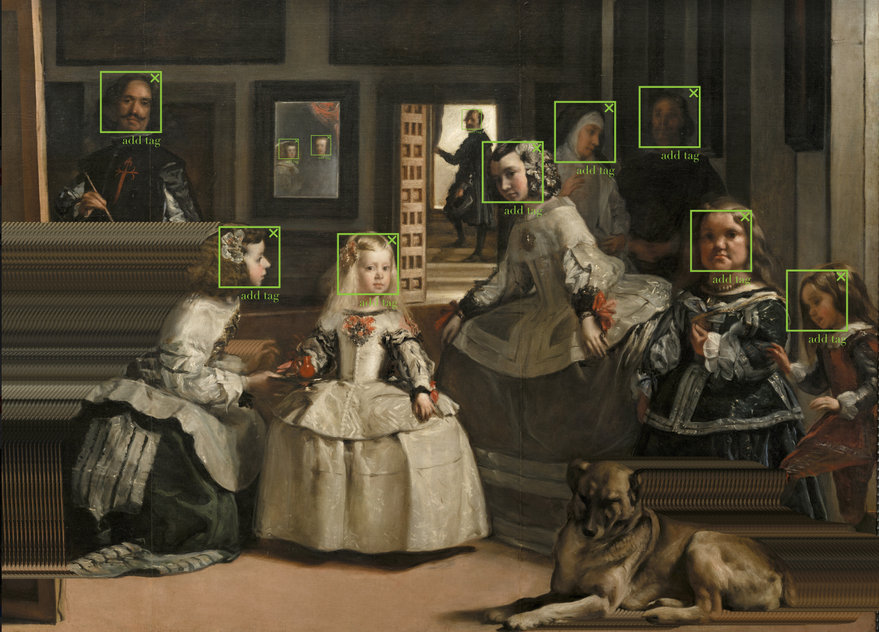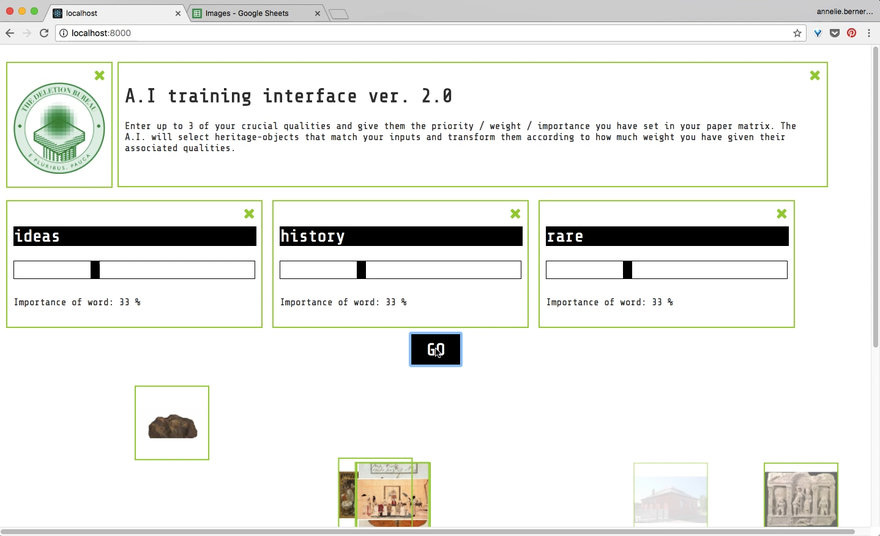Future Erasure
Futurescaping workshop
- Client: CIID Research, University of Newcastle, Research Center for Material Culture
- Year: 20202
- Role: Interface & Machine Design
- Tags: EdTech, UX Design, React, Wellbeing, Information Architecture
Project Overview
Future Erasureis a speculative design workshop exploring a near-future scenario in which museums must delete 20% of their collections annually. Developed as part of the EU-fundedCoHERE project, the workshop used design fiction to immerse heritage professionals in large-scale cultural deletion's ethical, logistical, and emotional stakes.
Participants didn’t just talk about deletion. Theydesigned it, interacting with fictional bureaucracies, algorithmic simulations, and tangible deletion devices.
Challenge
Heritage institutions face an unsustainable accumulation of physical objects, yet few have frameworks for structured deaccessioning. Future Erasure reframed this quiet crisis as an urgent design question:
How might deletion itself be designed intelligently, ethically, and provocatively?
My Role
AsInterface & Machine Designlead, I was responsible for:
Designing thebrowser-based deletion simulation, including dynamic sliders and feedback states
Building thephysical punchcard interaction system a speculative machine for “processing” heritage erasure
Crafting themachine outputs, including printed punchcard receipts with generative deletion outcomes
Collaborating on thevisual logicof algorithm interfaces, ensuring emotional resonance and usability under speculative constraints
Key Features
Deletion Algorithm Interface
A d3.js–driven tool that lets participants “tune” cultural deletion by adjusting sliders for ideas, history, and rarity
Punchcard Device & Field Kit
A custom-built artefact that combined tactile interaction with procedural ambiguity, prompting users to physically engage with algorithmic decisions
Visual Simulations of Erasure
Image-based provocations, like tagged face deletion in “Las Meninas” highlighted how machine logic could reshape cultural memory
Scenario Material
Participants received briefing dossiers and speculative newspapers to ground them in the world of the “Deletion Bureau”
Outcome
The workshop brought together over 40 museum leaders from across Europe. It helped them confront hard questions:
How do we define cultural value under constraint?
Can deletion be ethical, not just logistical?
What role might algorithms, interfaces, and devices play in shaping institutional memory?
The response was overwhelmingly positive, sparking requests for follow-up workshops and earning international recognition for its originality and depth.
Reflection
Proud of:
Designing machine interactions that were both provocative and intuitively legible
Turning speculative prompts into physical and digital tools for honest debate
Challenges:
Balancing clarity and ambiguity to leave room for interpretation without losing meaning
Building interactions that felt plausible within a fictional future

fe_01
Workshop participants seated around a table strewn with printed materials, behind a semi-transparent overlay of “The Deletion Bureau” seal, illustrating the speculative fiction framing used to immerse heritage experts in the Future Erasure scenario.

fe_02
Close-up of a bright orange field case containing a custom “Punchcard” device prototype, with a participant’s hand reaching to insert a punchcard—demonstrating the tangible prototyping exercise for interacting with erased heritage objects.

fe_03
Participant holding a custom punchcard receipt printed with algorithmic output (“E pluribus pauca”), highlighting how deletion algorithms generate tangible artifacts for expert review and reflection.

fe_04
Exercise slide showing three speculative design tasks plotted on axes labeled “keeping the essence” to “reimagine the future,” mapping steps for interacting with erased objects through three escalating exercises.

fe_05
Detail of Diego Velázquez’s “Las Meninas” overlaid with green face-tag bounding boxes and “add tag” prompts, representing the deletion algorithm simulation where subjects are selectively marked for erasure.

fe_06
Browser-based AI training interface v2.0 with three sliders for “ideas,” “history,” and “rare,” each set to a weight, illustrating the d3.js–driven interactive simulation for configuring deletion criteria.
